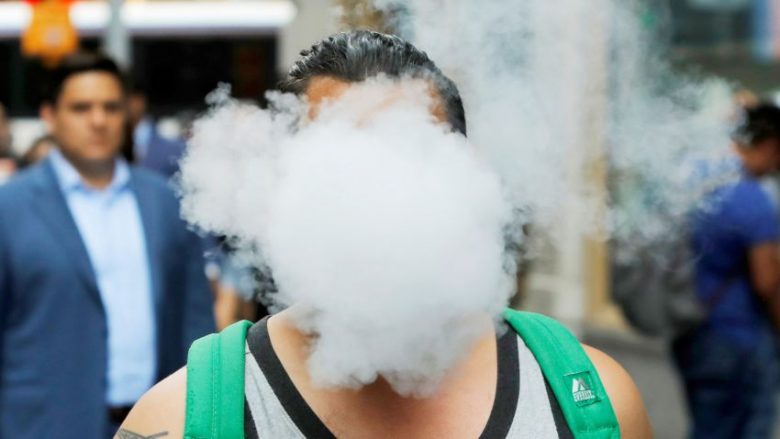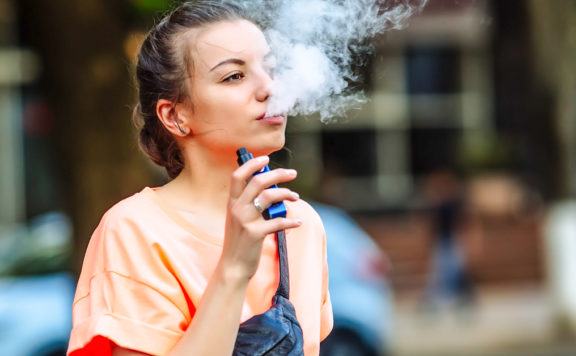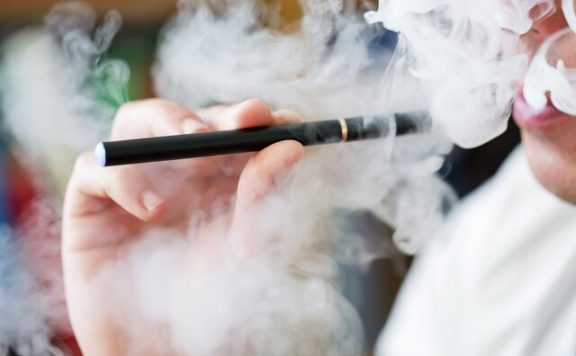Although teenagers vape has decreased recently, a new study reveals that those who do vape are starting earlier and using them more frequently.
According to a study published on Monday in the medical journal JAMA Network Open, less than 1 percent of teenagers who exclusively consume electronic cigarettes used the devices within the first five minutes after waking up each day between 2014 and 2017, but that figure rose to 10.3% from 2017 through 2021.
The COVID-19 pandemic caused an increase in adolescent depression, distress, neuropsychiatric symptoms, and suicidal behavior, the researchers from Massachusetts General Hospital and San Francisco stated in their study. “This increase in intensity may reflect the increasing use of nicotine for self-medication in response to these increases,” they said.
The epidemic has also resulted in a lost year for school-based treatment and prevention initiatives, so eradication plans will need to be strengthened to combat nicotine addiction in teenagers who lost a year of interaction with professionals who may have otherwise assisted them in receiving treatment.
Self-reported information from the Youth Risk Behavior Surveillance System and National Youth Tobacco Surveys of the US Centers for Disease Control and Prevention was examined by the researchers. The data comprised 151,573 survey participants who were all enrolled in either middle or high school in the USA.
According to the data, electronic cigarette use among youths climbed from nine or fewer days per month to at least ten days per month between 2014 and 2021, but the age at which they first began using them declined.
The average age at first usage decreased with time, by roughly 1.9 months each year, for electronic cigarettes, but stayed consistent for other tobacco products, according to the study. The survey participants’ average age was 14.5 years old.
The percentage of teenagers who used e-cigarettes for the first time at a young age among those who presently use any form of tobacco product climbed from 27.2% in 2014 to 78.3% in 2019 and stayed at 77% in 2021.
‘Concerning’ patterns in usage volume
E-cigarette use as a whole reached its highest level in 2019 before falling after that. But compared to conventional cigarette smokers, more people in 2019 started smoking e-cigarettes in just the first five minutes of waking up every day.
The researchers noted, “The alterations found in this survey study may reflect the greater levels of nicotine administration and addiction potential of contemporary e-cigarettes that use protonated nicotine to make nicotine easier to inhale.”
“The clinical requirement to manage child addiction to these new high-nicotine devices over the duration of many therapeutic encounters is highlighted by the growing intensity of modern e-cigarette use. Additionally, stricter legislation should be put in place, such as total bans on the marketing of flavored tobacco goods.
The results of this study indicate that electronic cigarettes may be putting a younger generation of teenagers in increased danger of nicotine addiction, and studies have demonstrated that numerous teenagers are uninformed that the majority of electronic cigarettes contain nicotine, according to Ashley Merianos, a research affiliate member of Cincinnati Children’s Hospital Medical Center and the Thirdhand Smoke Research Consortium who did not take part in the new research.
“The decrease in e-cigarette consumption among American teenagers between 2019 and 2021 is good. Although tobacco use is often initiated around youth, the addiction and frequency of usage trends found in this research are alarming, according to Merianos, who is also a professor researcher at the University of Cincinnati.
The tremendous tobacco control gains accomplished over many decades, she noted, could be undone by early nicotine addiction. “Adolescent smoking in the United States is currently at a historical low, but the continuous introduction and usage of electronic cigarettes among teenagers could reverse this progress.”
Besides tobacco or menthol, the US Food and Drug Administration outlawed the sale of flavored cartridge-based e-cigarettes in 2020. However, the researchers observed in their study that flavorless disposable e-cigarettes quickly became popular among teenagers after the prohibition, and they are urging practitioners to be on the lookout for potential cases of nicotine addiction in younger generations.
The researchers concluded in their study that because tobacco addiction is a lifelong illness, physicians should be prepared to handle child addiction to these new high-nicotine products during the span of numerous therapeutic interactions. The need for comprehensive local, state, and federal bans on the selling of flavored tobacco supplies as well as consideration of doing away with the sale of these products in the open retailing industry, as is done in 47 countries as of 2021, are highlighted by the rising intensity of contemporary e-cigarette use.
Anxiety regarding “a more serious nicotine addiction”
According to Dr. Scott Hadland, chief of adolescent and young adult medicine at Mass General for Children and Harvard Medical School, who wasn’t part of the current study but has studied nicotine use among teenagers during the Covid-19 outbreak, it is one of the first studies to do so.
The majority of us pediatricians were concerned but unsure of what to expect in terms of teen nicotine usage during these disruptions. This work closes a significant information gap, according to Hadland’s email.
“National data imply that adolescent vaping may have decreased during the Covid epidemic, we assume because Covid socially isolated many kids and substance use commonly occurs when teens are among their peers,” he said. However, I have noticed in my clinic that kids who “do” vape are displaying more serious nicotine addiction than at any other time in 30 years of practice.
Hadland continued by saying that the results of the current study corroborate what he has observed firsthand in his own practice, including the younger age at which kids begin using e-cigarettes, the high intensity of use, and the increased signs of dependency, such as vaping first thing in the morning.
Teens that vape frequently take in high doses of nicotine continuously all through the day, which increases their susceptibility to nicotine addiction and dependence. I frequently see kids who, if they attempt to quit vaping, face painful nicotine withdrawal symptoms along with intense urges to use,” Hadland wrote in the email.
“I’ve needed to utilize drugs more and more to control cravings and withdrawal symptoms in kids to help them stop,” he added. “For example, nicotine gum or lozenges, nicotine patches, and varenicline pills—and sometimes a mix of these.” “All of this is a recent phenomenon.”







